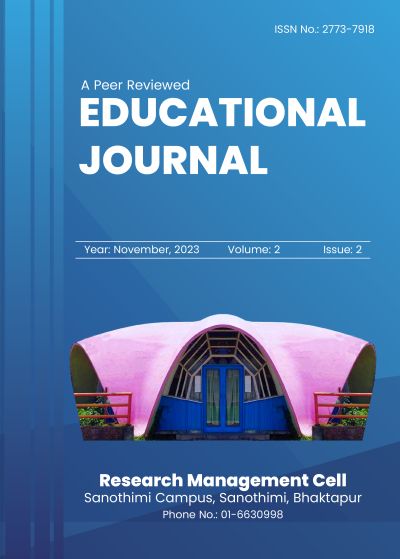Assessment of Landslide: A five decade impact study on human life in the Koshi Province
DOI:
https://doi.org/10.3126/ej.v2i2.62125Keywords:
human and impact, Landslide, causesAbstract
Koshi province covers about 82 %of hills and mountain region. Rugged and fragile geomorphology is our landform’s characteristics with various reasons like rock structure, slope, rainfall and unplanned settlement as well as developmental intervention. Geological, morphological, human and physical causes are common factors to trigger the vulnerability. This study has found that 990 human lives have lost and around 107,259 people have affected during 1971- 2020 in the Koshi province of Nepal. Likewise, the maximum number of deaths was 114 people in 2002 and the minimum deaths were 1 person in 1987 during same period. Out of 14 district, four districts have been identified very extremely vulnerable which include Taplejung, Khotang, Okhaldhunga and Sangkhuwasabha, while other four districts Bhojpur, Solukhumbu, Ilam and Panchther are extremely vulnerable districts in terms of landslide hazard. In addition, the analysis of number of human deaths caused by landslide shows that the impact of human life and properties has been fluctuating in each decade over the fifty years. There was high vulnerability of human life in the decades of 1990s and 2000s. In order to reduce the landslide risk in the surroundings of mountain people and their environment, preparedness of adaptation measures should be considered in the future.




